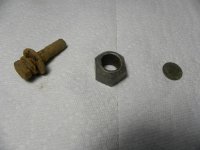Mikemonster
Jr. Member
Forgot to add;
I'm going to the UK for a week beginning Aug 30th for a week to attend a gathering of those of us who own a Panther www.panthercarclub.com
Our dinner/dance will be held at the Castle where they filmed much of Harry Potter. I'll be staying in London.
I'm going to the UK for a week beginning Aug 30th for a week to attend a gathering of those of us who own a Panther www.panthercarclub.com
Our dinner/dance will be held at the Castle where they filmed much of Harry Potter. I'll be staying in London.







